How to choose a pump for a well in your own summer cottage
It is the turn of installation and connection of the most important element of water supply, namely the borehole pump. However, before you purchase it, you need to study the main characteristics of the well in order to select the necessary parameters of the pumping unit with maximum accuracy.
This, one might say, is the most critical stage of well construction. After all, the performance and durability of the water supply system, the safety of its use, as well as the qualitative composition of drinking water largely depend on how well the pump for the well is selected and installed.
Downhole pump
This article will offer instructions describing the main parameters of borehole pumps, which will help you make the right decision in favor of a particular unit.
In addition, the reader will be presented with the main selection criteria that you should pay attention to when buying it, as well as a brief guide on how to choose the right pump for a well with certain technical characteristics.
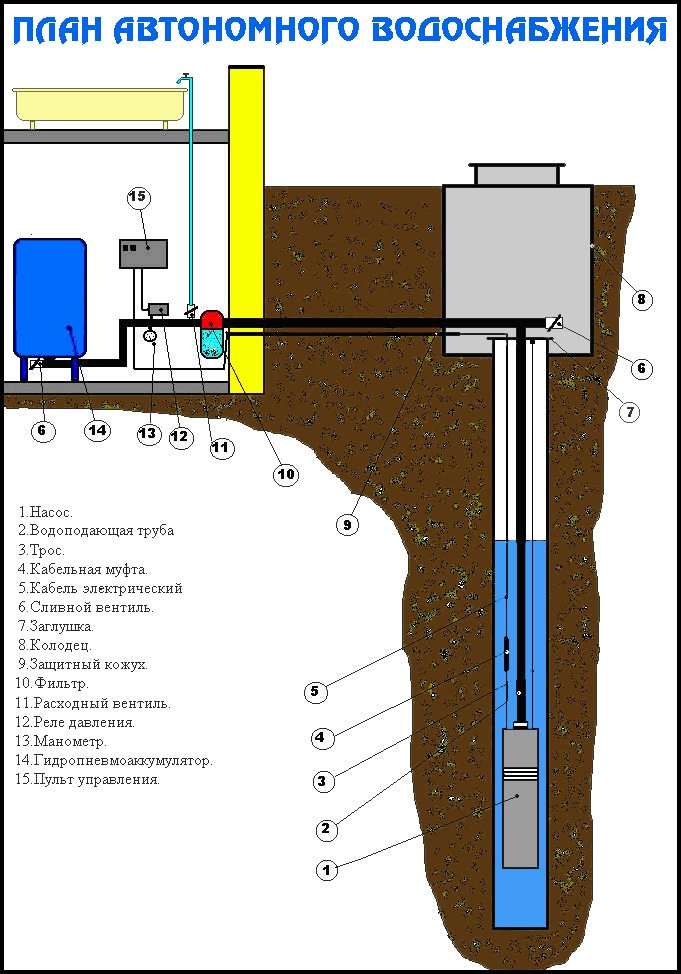
Surface pumps
For pumping water from underground wells, there are two types of pumping units: surface and submersible. As the name implies, surface pumps are installed on the surface of the earth in close proximity to the wellhead.
They are cheaper, easier to install and maintain, but they have some features that significantly limit their convenience and scope:
- Their installation requires a special room.
- High noise level during operation.
- The need for forced cooling of the engine.
- Before starting, filling of the working fluid is required.
- The maximum distance from the height of the working body to
can be no more than 7-8 meters.
It is advisable to use such pumps for seasonal use in underground sources without a caisson at a high dynamic liquid level, as well as for the extraction of technical water in the upper layers of groundwater.
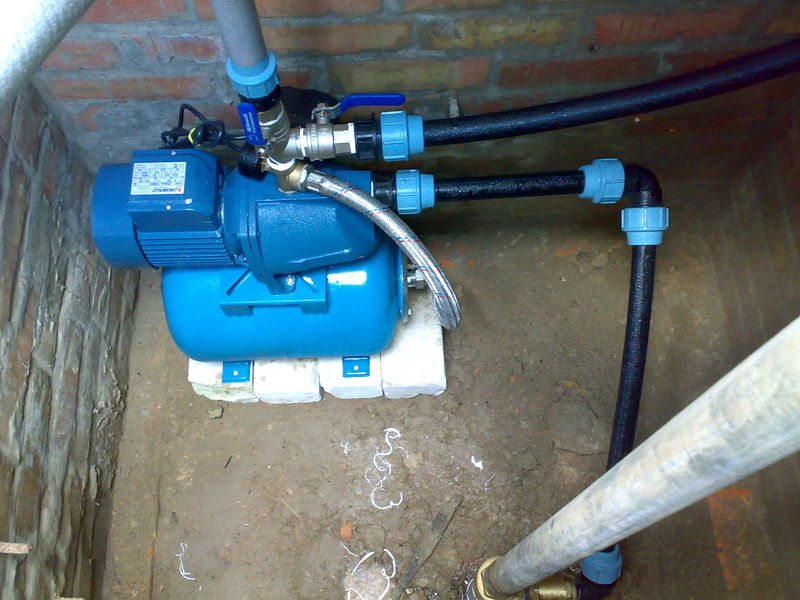
Submersible pumps
The most widely used devices for pumping water from a well are submersible type devices that are installed in the wellbore below the dynamic liquid level directly in the water column. They are considered the most versatile and have good performance.
The advantages of submersible pumps include their following characteristics:
- High reliability and durability.
- Ability to work in any climatic conditions, regardless of the season.
- High performance and fluid head height.
- Before start-up, filling of the working fluid is not required.
- During operation, forced cooling is not required.
- Quick start-up, low inertia and quiet operation make them ideal for pairing with an automated water supply system for a private house or household plot.
Of the shortcomings of submersible pumps, the most tangible is their rather high price and a more complicated process of installation, maintenance and repair.
Taking into account all the pros and cons of units of this type, their use is a priority for the extraction of water from underground sources, so in the future we will talk about submersible pumps.
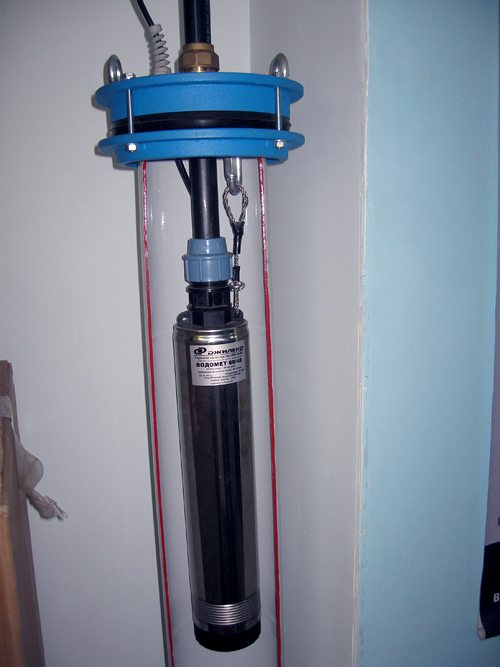
Water consumption
One of the most important indicators of any pump is the flow rate of water, or in other words, its performance. This value is characterized by the volume of the pumped liquid per unit of time, for example, 6 cubic meters per hour or 0.5 cubic meters per minute.
To know how to choose a borehole pump on this basis, you need to find out. The flow rate is understood as its ability to produce water for pumping at a certain speed without a significant decrease in the dynamic level.
Typically, the flow rate is indicated in the technical passport of the well, which is issued by the drilling company, however, it is very difficult to determine the exact value of the flow rate for each specific well, since this value is not constant and may change over time depending on various conditions.
It should only be said that the recommended pump performance should be 10-20% less than the well flow rate. This will allow the most rational use of the aquifer and at the same time avoid draining the well and running the pump in dry running mode.
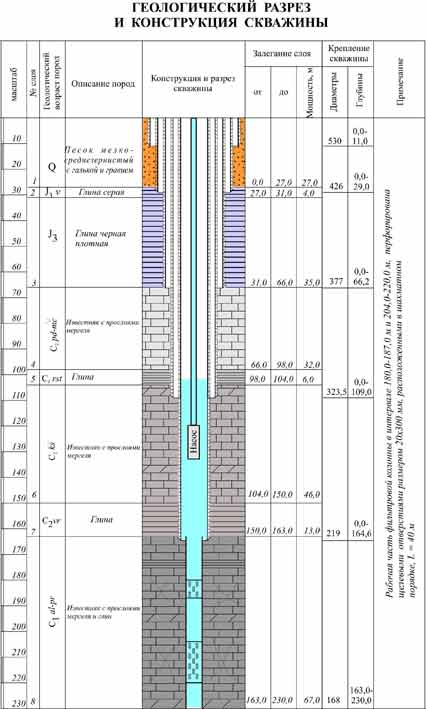
Advice! The most optimal well flow rate is achieved under the following conditions: during pumping of water for one hour, the difference between the static and dynamic levels should be no more than 1 meter.
Head height
Another important parameter that affects the selection of a downhole pump is the maximum relative height to which it is able to lift the working fluid. The required head height mainly depends on the depth of the well and the level of the highest point of water consumption in the building above the ground.
In order to accurately calculate the required head height, you need to add the depth of the pump relative to ground level and the maximum height of the water consumers. In addition, to ensure normal working pressure in the water supply system, it is necessary to add another 30 meters to the obtained value, which corresponds to a pressure of 3 bar.
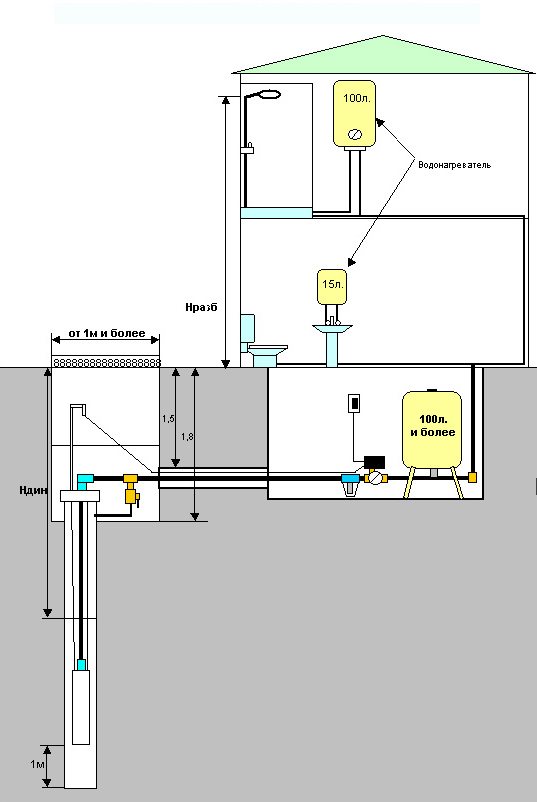
Note! As an example, consider a well 40 meters deep, located next to a two-story house 6 meters high. To determine the height of the pressure, it is necessary to add the length of the pressure pipe (40 m) to the height of the second floor of the house (6 m) and add the height necessary to achieve the operating pressure of the system (30 m). Thus, the optimal pump head will be ~ 80 m.
Casing string diameter
To select the correct pump size, the inside diameter of the casing pipes must be known. The bulk of the submersible units are available in two sizes, depending on their external diameter of 3 inches or 4 inches. In millimeters, these are ~75 and ~100 mm, respectively.
When drilling a well, keep in mind that a wider range of products are available in the 4-inch size range, so it is better to use casing pipes with an internal diameter of at least 110 mm.
Submersible units with a diameter of 3 inches, in addition to being less common and in a smaller assortment, also have a higher cost than 4-inch ones. Therefore, when installing a submersible pump in a well with your own hands, it is recommended to give preference to models with a body diameter of 4 inches.
Note! When choosing a unit for domestic water supply of a residential building, taking into account the average daily water consumption for a family of 4, its productivity should be 3-4 m³ / h.
Conclusion
After reading this article, it is easy to understand that for an independent choice of pumping equipment, it is enough to know the main technical parameters of the well and have a water supply scheme for your home.
For more information, you can watch the video in this article or read similar materials on our site.









